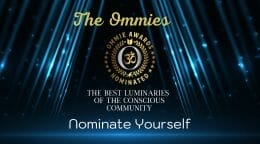LEGO Group Sets New Standards in Sustainable Packaging

One our biggest environmental issue is that packaging for products almost always goes straight to the landfill. The Lego Group seeks to change this by transitioning to sustainable packaging.
The LEGO Group Aims for 100% Sustainable Packaging by 2025
 The Lego Group’s ambitions include replacing single-use disposable plastics and finding recycled or sustainably sourced bio-based materials for all plastic-based packaging.
The Lego Group’s ambitions include replacing single-use disposable plastics and finding recycled or sustainably sourced bio-based materials for all plastic-based packaging.
In 2015 the LEGO Group announced its ambition to use 100% sustainable materials in both its bricks and packaging by 2030. Today the LEGO Group announced that they are aiming for 100% sustainable packaging by 2025.
Currently, the majority of LEGO® packaging, by weight, is cardboard or paper-based which is recyclable, sustainably sourced and certified by the Forest Stewardship Council.
Tim Brooks, Vice President Environmental Responsibility at the LEGO Group said:
“To support our company mission, we have a Planet Promise and we have pledged to play our part in protecting the planet for future generations. Using sustainable packaging is an important part of fulfilling that promise. By bringing forward our ambition or sustainable packaging, we are also acknowledging the need to find better packaging solutions sooner. We’ve made good progress in the past three years, and there is still work to do.”
LEGO bricks are designed to be reused and handed down through generations, but not everyone keeps their LEGO boxes and another packaging. As some of the LEGO packagings contains single-use disposable plastics, which today are not sustainable, and in some cases cannot be recycled by consumers, the LEGO Group is actively taking measures to improve its packaging sustainability.
Tim Brooks added:
“By 2025, our aim is that no LEGO packaging parts have to end up in a landfill. Packaging will be made from renewable or recycled materials and will be easy for consumers to recycle.”
The LEGO Group has taken several steps to improve the sustainability of its packaging:
In 2018, the company began using recycled plastic in packaging ‘blisters’ – the transparent plastic windows which allow consumers to have a sneak peek into some LEGO boxes This year, LEGO boxes in the US and Canada started to feature the How2Recycle® label promoting packaging recycling and providing US and Canadian consumers with clear guidance to responsibly recycle their LEGO packaging In 2017, plastic trays used in Advent Calendars were replaced with recyclable paper-pulp trays, saving up to 1 million plastic trays from going to the landfill.
Approximately 75% of cardboard used to make LEGO boxes comes from recycled material The average size of a LEGO box has been reduced by 14% over the past four years, improving transport efficiency, saving on average every year over 3,000 truckloads and 7,000 tonnes of cardboard All paper and cardboard used in LEGO products and product packaging is recyclable, sustainably sourced and certified by the Forest Stewardship Council The LEGO Group’s sustainable packaging ambition focuses on finding sustainable packaging alternatives that are:
Renewable: 100% of LEGO boxes, bags, and special packaging are to be made from recycled or sustainably sourced bio-based materials Efficient: ongoingly exploring ways to optimize packaging, balancing consumer appeal with environmental action Recyclable: designing packaging that facilitates consumers to recycle in our major markets What is a sustainable material?
The LEGO Group believes a new sustainable material must have an ever-lighter footprint than the material it replaces across key environmental and social impact areas such as fossil resource use, human rights, and climate change.
About sustainability at the LEGO Group
The LEGO Group partners with the World Wildlife Fund for Nature (WWF), as part of efforts to reduce CO2 emissions in manufacturing and supply chain operations and promote global action on climate change.
Through investments in wind power, the energy used to make LEGO bricks is balanced by the production of renewable energy.
For more information visit: www.LEGO.build/ResponsibilityAmbitions
About the LEGO Group
 The LEGO Group is a privately held, family-owned company with headquarters in Billund, Denmark, and main offices in Enfield, USA, London, UK, Shanghai, China, and Singapore. Founded in 1932 by Ole Kirk Kristiansen, and based on the iconic LEGO® brick, it is one of the world’s leading manufacturers of play materials. Guided by the company spirit: “Only the best is good enough”, the company is committed to the development of children and aims to inspire and develop the builders of tomorrow through creative play and learning. LEGO products are sold worldwide and can be virtually explored at www.LEGO.com.
The LEGO Group is a privately held, family-owned company with headquarters in Billund, Denmark, and main offices in Enfield, USA, London, UK, Shanghai, China, and Singapore. Founded in 1932 by Ole Kirk Kristiansen, and based on the iconic LEGO® brick, it is one of the world’s leading manufacturers of play materials. Guided by the company spirit: “Only the best is good enough”, the company is committed to the development of children and aims to inspire and develop the builders of tomorrow through creative play and learning. LEGO products are sold worldwide and can be virtually explored at www.LEGO.com.
OMTimes Magazine is one of the leading on-line content providers of positivity, wellness and personal empowerment. OMTimes Magazine - Co-Creating a More Conscious Reality










